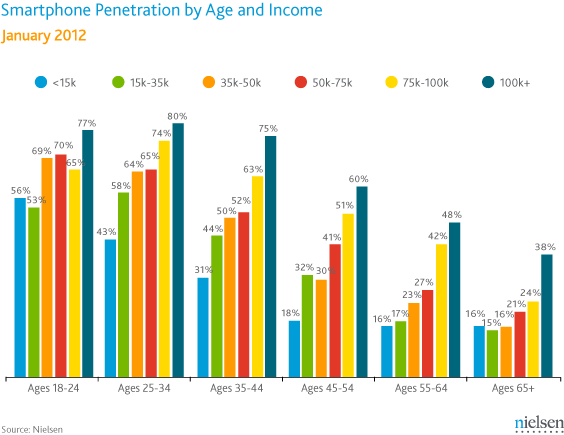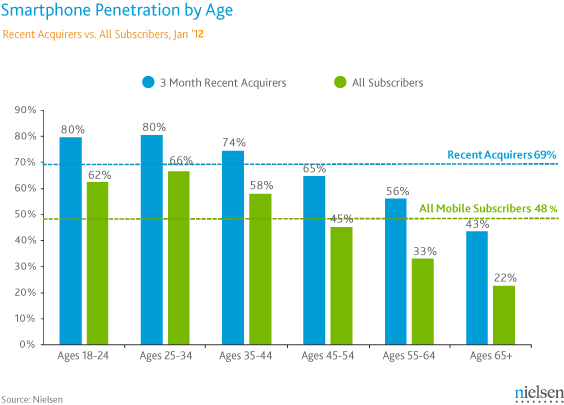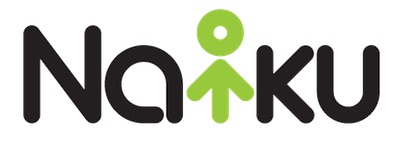A new report published today from Neilsen shows a significant shift in how smartphone ownership is perceived. While the 35+ age group brackets are still relatively pragmatic about smartphone ownership (relative to their income, indicating that their perception is that a smartphone is not a “must-have” device), those in the younger age bracket see the device as something to own regardless of income.
For the first graph, look how most of the age brackets have a pretty linear profile – the more they make, the more likely it is that they will have a smartphone. Now look at the youngest age bracket – the angled profile is not there. It is more flat. This is fascinating. While the K-12 demographic (< 18 years old) is not profiled, you can only imagine how important these devices are to them.
I’m sure there will be plenty of commentary on these findings, such as “Why would people with a lower income be finding money to own an expensive smartphone?” There are probably plenty of arguments for and against this behavior – a strong argument for is that it may be the only computer in the home.
Regardless of these positions, what is apparent is that the smartphone is on a fast-track to ubiquity. Here are the charts:
Oh, and a plug: Are you a 1:1 school? If you are, we would love to talk with you about using those devices to inform instruction. Drop us an email. or signup for a webinar



